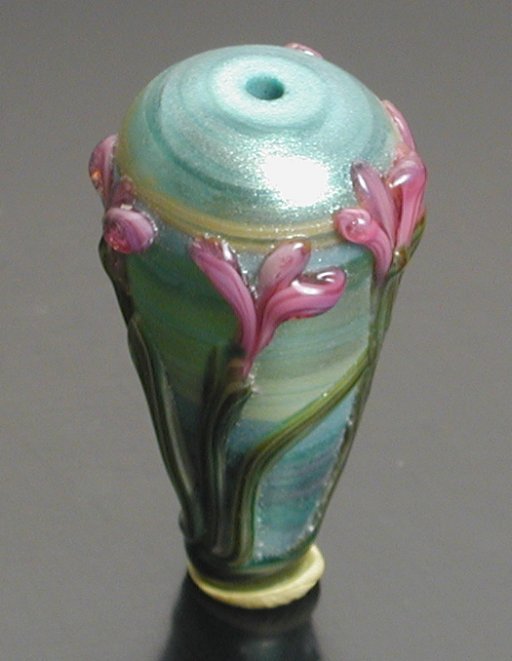Traditionally, I make floral pixie vase beads on a dark transparent glass, using hi-lite pixie dust to bring out the color. I seldom put pixie dust on opaque glass, because I don't like the look. But what would happen if I had roughly the appearance of the frit and powder backgrounds under pixie dust? —Rather than go to all the effort of making a frit and powder bead, I used stripey cane of mixed opaque and transparent glass to make a base bead, which I then rolled in green hi-lite (the newer one, that looks more green in powder form).
After I finished the bead, I concluded it was icky.

In the interest of truth in advertising, I've left the handi-tac showing. Getting my vase beads to stand independently is a relatively new goal for me. This bead is quite a bit smaller than the others shown, being only about 25–30 mm long.
After I got it out of the kiln, I decided it wasn't as awful as I'd thought originally (it's difficult to judge glass when it's 900 F plus, because a lot of the colors aren't really true, though they're closer to their room temperature appearance than 1300 deg glass).
So I guess I'll have to make some more. And case you're wondering was stripey cane is, well, it's just chunks of glass of melted together in a wodge, or colors striped onto a rod, or colors fused in a rod pod—there are many ways to make multi-colored cane. But that's a post for another day.
hollow mandrel wound bead made with Effetre, pixie dust, and trailed with complex cane. Created 03apr05.
Unless otherwise noted, text, image and objects depicted therein copyright 1996--present sylvus tarn.
Sylvus Tarn